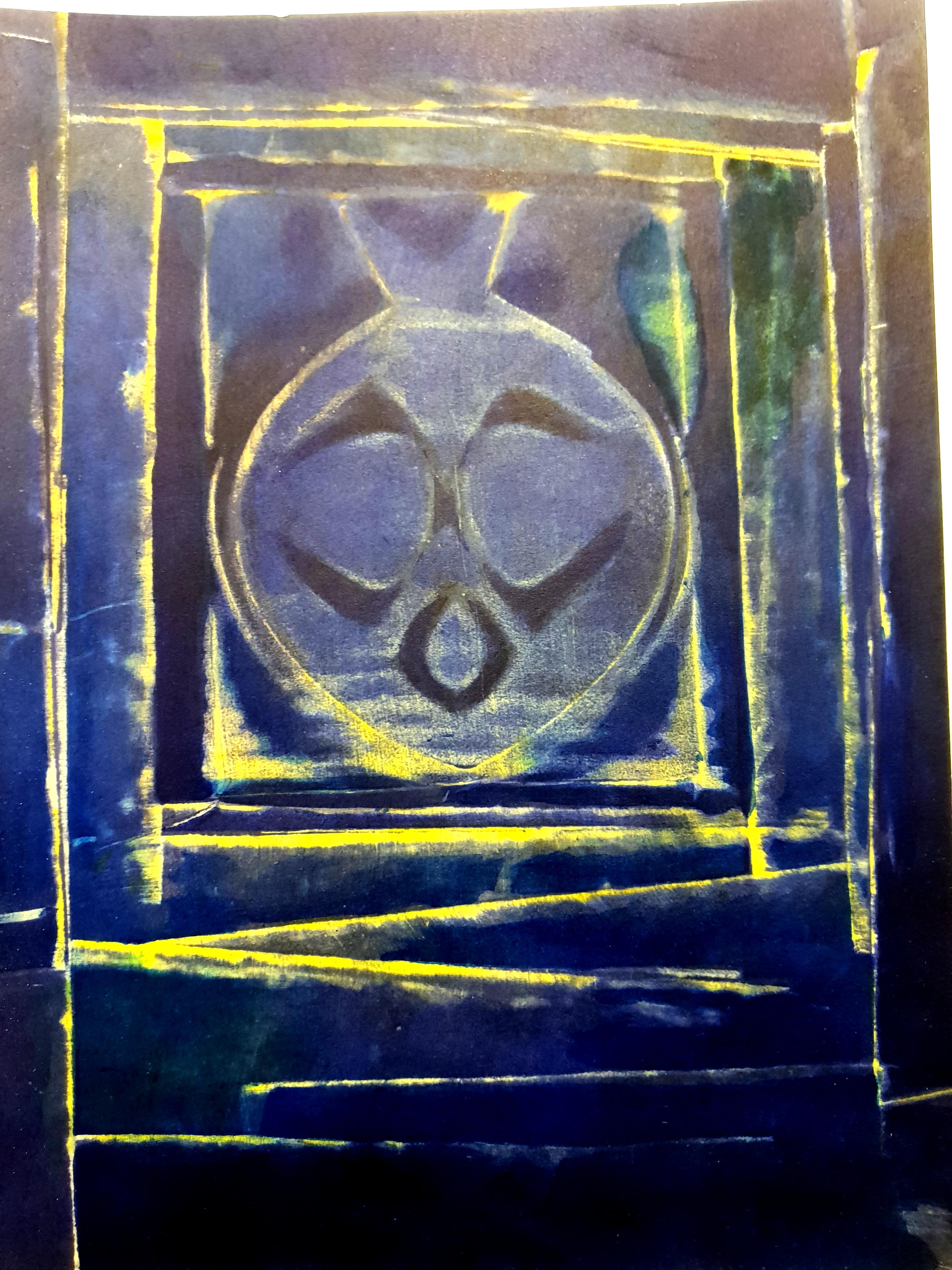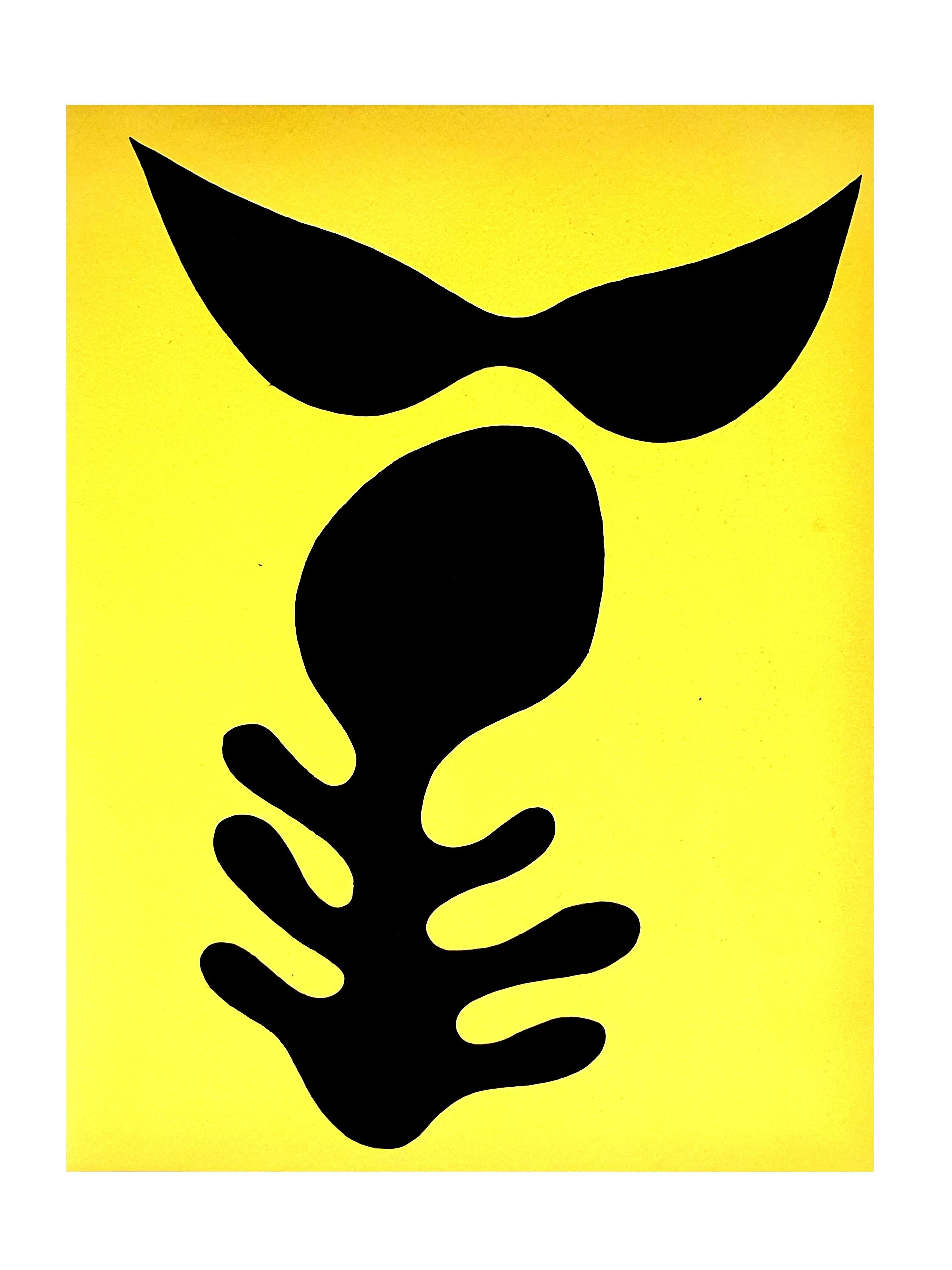Items Similar to Analysis of Various Evils - Lithograph and Stencil
Want more images or videos?
Request additional images or videos from the seller
1 of 12
(after) Paul KleeAnalysis of Various Evils - Lithograph and Stencil1964
1964
About the Item
Paul KLEE (after)
Analysis of Various Evils
Lithograph and stencil (Jacomet process)
Printed signature in the plate
On canson vellum 50 x 38.2 cm (19.6 x 14.9 in)
INFORMATION : This lithograph was edited in 1964 by Galerie Berggruen in collaboration with Felix Klee, the son of the artist. The edition was limited to 500 copies.
Very good condition, bottom left corner lightly creased
- Creator:(after) Paul Klee (1879 - 1940, German, Swiss)
- Creation Year:1964
- Dimensions:Height: 19.69 in (50 cm)Width: 15.04 in (38.2 cm)
- Medium:
- Movement & Style:
- Period:
- Condition:
- Gallery Location:Paris, FR
- Reference Number:1stDibs: LU46434527002
About the Seller
4.9
Platinum Seller
These expertly vetted sellers are 1stDibs' most experienced sellers and are rated highest by our customers.
Established in 2010
1stDibs seller since 2016
3,266 sales on 1stDibs
Typical response time: 1 hour
- ShippingRetrieving quote...Ships From: Paris, France
- Return PolicyA return for this item may be initiated within 7 days of delivery.
More From This SellerView All
- A Shattering Entrance upon the American Stage - orignal etching - signed - 1974By Salvador DalíLocated in Paris, FRSalvador Dali A Shattering Entrance upon the American Stage Original etching and stencil Handsigned in the right corner with the blind stamp of the editor in the left corner On B...Category
1970s Surrealist Figurative Prints
MaterialsStencil, Etching
- The Divine Love of Gala - orignal etching - signed - 1974By Salvador DalíLocated in Paris, FRSalvador Dali The Divine Love of Gala Original etching and stencil Handsigned in the right corner with the blind stamp of the editor in the left corner...Category
1970s Surrealist Figurative Prints
MaterialsStencil, Etching
- God, Time, Space, and the Pope - orignal etching - signed - 1974By Salvador DalíLocated in Paris, FRSalvador Dali God, Time, Space, and the Pope Original etching and stencil Handsigned in the right corner with the blind stamp of the editor in the left corner On BFK Rives vellum...Category
1970s Surrealist Figurative Prints
MaterialsStencil, Etching
- Olympia, Laurel Wreath - Lithograph (Olympic Games Munich 1972)By Paul WunderlichLocated in Paris, FRPaul WUNDERLICH Olympia, Laurel Wreath Lithograph Signature printed in the plate On heavy paper 101 x 64 cm (c. 40 x 26 inch) Made for the Olympic Games in Munich, 1972 Excellent c...Category
1970s Surrealist Figurative Prints
MaterialsLithograph
- Faster, Higher, Stronger - Lithograph (Olympic Games Munich 1972)By Charles LapicqueLocated in Paris, FRCharles LAPICQUE Faster, Higher, Stronger Lithograph Signature printed in the plate On heavy paper 101 x 64 cm (c. 40 x 26 inch) Made for the Olympic Games in Munich, 1972 Excellen...Category
1970s Surrealist Figurative Prints
MaterialsLithograph
- Venice is a Woman and a World - Handsigned lithographBy Patrick BrissaudLocated in Paris, FRPatrick BRISSAUD Venice is a Woman and a World Orignal lithograph Handsigned in pencil Numbered / 175 copies On Arches Vellum 54 x 74 cm (c. 22 x 30 in) Excellent conditionCategory
Late 20th Century Surrealist Figurative Prints
MaterialsLithograph
You May Also Like
- Dalinean ProphecyBy Salvador DalíLocated in Washington, DCArtist: Salvador Dali Title: Dalinean Prophecy Portfolio: Imaginations and Objects of the Future Medium: Engraving with color by...Category
1970s Surrealist Figurative Prints
MaterialsEngraving, Stencil
- (after) Max Ernst - Blue Bird - StencilBy (after) Max ErnstLocated in Collonge Bellerive, Geneve, CHMax Ernst (after) - Blue Bird - Stencil Published in the deluxe art review, XXe Siecle, 1958 Dimensions: 32 x 25 cm Publisher: G. di San Lazzaro. Max Ernst was born in Bruhl, a place near Cologne, in Germany. He was raised in a strict Catholic family, and both of his parents were disciplinarians who were dedicated to training their children into God-fearing and talented individuals. Although his father was deaf, Ernst learned so much from him, particularly when it comes to painting. In fact, much of his early years were lived under the inspiration of his father who was also a teacher. He was the one who introduced painting to Ernst at an early age. In 1914, Ernst attended the University of Bonn where he studied philosophy. However, he eventually dropped out of school because he was more interested in the arts. He claimed that his primary sources of interest included anything that had something to do with painting. Moreover, he became fascinated with psychology, among other subjects in school. Primarily, Ernst's love for painting was the main reason why he became deeply interested with this craft and decided to pursue it later on in his life. During his early years, he became familiar with the works of some of the greatest artists of all time including Claude Monet, Paul Cezanne and Vincent van Gogh. He was also drawn to themes such as fantasy and dream imagery, which were among the common subjects of the works of Giorgio de Chirico. During World War I, Ernst was forced to join the German Army, and he became a part of the artillery division that exposed him greatly to the drama of warfare. A soldier in the War, Ernst emerged deeply traumatized and highly critical of western culture. These charged sentiments directly fed into his vision of the modern world as irrational, an idea that became the basis of his artwork. Ernst's artistic vision, along with his humor and verve come through strongly in his Dada and Surrealists works; Ernst was a pioneer of both movements. It was Ernst's memories of the war and his childhood that helps him create absurd, yet interesting scenes in his artworks. Soon, he took his passion for the arts seriously when he returned to Germany after the war. With Jean Arp, a poet and artist, Ernst formed a group for artists in Cologne. He also developed a close relationship with fellow artists in Paris who propagated Avant-Garde artworks. In 1919, Ernst started creating some of his first collages, where he made use of various materials including illustrated catalogs and some manuals that produced a somewhat futuristic image. His unique masterpieces allowed Ernst to create his very own world of dreams and fantasy, which eventually helped heal his personal issues and trauma. In addition to painting and creating collages, Ernst also edited some journals. He also made a few sculptures that were rather queer in appearance. In 1920s, influenced by the writings of psychologist Sigmund Freud, the literary, intellectual, and artistic movement called Surrealism sought a revolution against the constraints of the rational mind; and by extension, they saw the rules of a society as oppressive. Surrealism also embraces a Marxist ideology that demands an orthodox approach to history as a product of the material interaction of collective interests, and many renown Surrealism artists later on became 20th century Counterculture symbols such as Marxist Che Guevara. In 1922 Ernst moved to Paris, where the surrealists were gathering around Andre Breton. In 1923 Ernst finished Men Shall Know Nothing of This, known as the first Surrealist painting. Ernst was one of the first artists who apply The Interpretation of Dreams by Freud to investigate his deep psyche in order to explore the source of his own creativity. While turning inwards unto himself, Ernst was also tapping into the universal unconscious with its common dream imagery. Despite his strange styles, Ernst gained quite a reputation that earned him some followers throughout his life. He even helped shape the trend of American art during the mid-century, thanks to his brilliant and extraordinary ideas that were unlike those of other artists during his time. Ernst also became friends with Peggy Guggenheim, which inspired him to develop close ties with the abstract expressionists. When Ernst lived in Sedona, he became deeply fascinated with the Southwest Native American navajo art. In fact, the technique used in this artwork inspired him and paved the way for him to create paintings that depicted this style. Thus, Ernst became a main figure of this art technique, including the rituals and spiritual traditions included in this form of art. Pollock, aside from the other younger generations of abstract expressionists, was also inspired by sand painting of the Southwest...Category
1950s Surrealist Animal Prints
MaterialsStencil
- after Jean Arp - Moustaches et Squelette - PochoirBy Jean ArpLocated in Collonge Bellerive, Geneve, CHafter Jean Arp Moustaches et Squelette Executed in 1957 after the original artwork by the studios from Daniel Jacomet in Paris, France Pochoir Dimensions: 32 x 24 cm From the art re...Category
1950s Surrealist Abstract Prints
MaterialsStencil, Paper
- Jean Arp (after) - Composition - PochoirBy Jean ArpLocated in Collonge Bellerive, Geneve, CHJean Arp (after) - Composition - Pochoir 1958 Dimensions: 32 x 24 cm From the art revue XXe siècle Unsigned and unumbered as issuedCategory
1930s Surrealist Abstract Prints
MaterialsStencil
- Capricho de Goya n°7 - Héliogravure and Pochoir attr. to S. Dalì - 1977By Salvador DalíLocated in Roma, ITCapricho de Goya n°7 is an héliogravure and stencil, realized in 1977, hand-signed and numbered n°125/200. Published by Berggruen Paris in 1977. Image dimensions: 21x15 cm. Incl...Category
1970s Surrealist Figurative Prints
MaterialsEngraving, Stencil
- Capricho de Goya n°63 - Héliogravure and Pochoir attr. to S. Dalì - 1977By Salvador DalíLocated in Roma, ITCapricho de Goya n°63 is an original héliogravure and pochoir, realized by Salvador Dalí in 1977, hand-signed and numbered n°125/200. Included a wooden frame. In very good condi...Category
1970s Surrealist Figurative Prints
MaterialsStencil, Engraving
Recently Viewed
View AllMore Ways To Browse
Good Evil
Good And Evil
Antique Stencil
Antique Stencils
Renaissance Dress Vintage
Vintage Cat Illustration
Vintage Map Light
World War 1 Soldier
1960s Pablo Picasso Signed Lithograph
3d Wall Art Colorful
Acrobates Picasso
Andy Warhol Album Cover Art
Andy Warhol Album Covers
Arab Portrait
Artichoke Art
Atlantis Print
Blue Nude Ii
Chagall Bella

